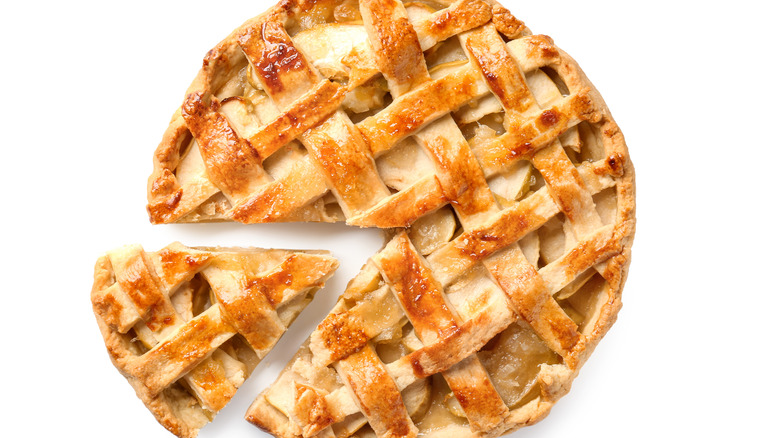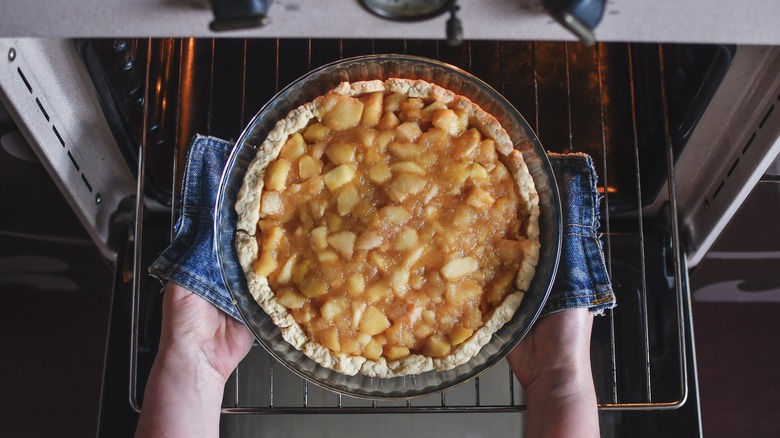The Often Overlooked Kitchen Tool To Ensure Crispy Pie Crust
What do meat, cherries, and pecans have in common? They're all key ingredients in different flavors of pie. Although we love enjoying them at summer barbecues or holiday festivities today, pies have been around for a long time and date all the way back to ancient Egypt. Back in the day, meat pies were the most common, although they were called "pyes," and the crust was called "coffyn," according to the American Pie Council.
Despite their grim-sounding origin, pie crusts have evolved quite a bit since then, and today they are an essential component to balance out an often gooier filling. There are many ways to make an excellent pie crust — have you ever tried using fortune cookies as your dough for crispiness or blending different flours for lightness and fluffiness? Taste of Home also recommends using lard instead of butter, cutting butter into pea-sized bits, and keeping the dough cool to ensure maximum flakiness. While these tips are sure to amp up the quality of your homemade pie crust, there is one often-overlooked baking secret you'll want to prioritize.
Baking steels bring out the crispiness
To yield the crispiest pie crust possible, Eater recommends using a baking steel. If you've never heard of it, don't worry, it's not a device you'll find in every kitchen. According to Serious Eats, baking steel is an oven-safe, food-grade slab of steel that can substitute for a pizza stone. Baking Steel, a brand producing these plates, says their pre-seasoned tools solve various issues that pizza stones have, such as cracking, releasing heat, and long cooking times. But there are a variety of other companies that make these slabs, all with the same purpose: to create light, crispy crusts in minimal time.
Eater says that baking steels work well when blind-baking pie crusts, which just means that you're letting the dough cook in the oven before adding in filling. The advantage of baking steel is that it concentrates the heat, meaning the crust will brown effectively and is less likely to absorb a liquid filling. HuffPost states that it can even eliminate the need to blind bake for some pie shells because it will make the crust cook faster during regular baking. But that's not all — Food & Wine also notes that using a baking steel can circumvent the hot spots that come with using a thin baking sheet, making for more evenly cooked food. This doesn't have to be limited to pies, as you can use them to make pizzas (of course), bread, and even samosas.

